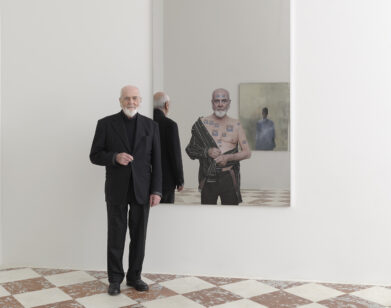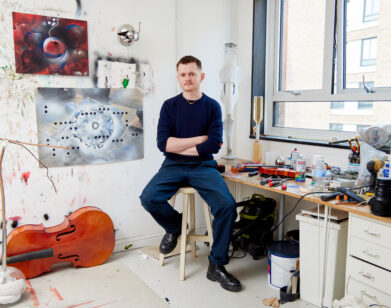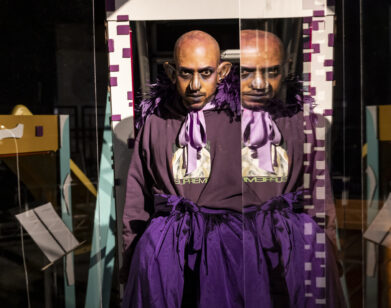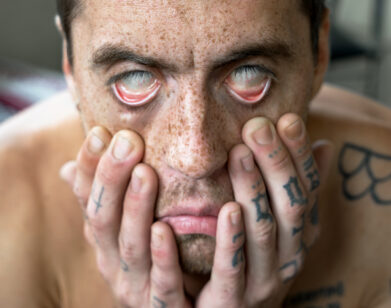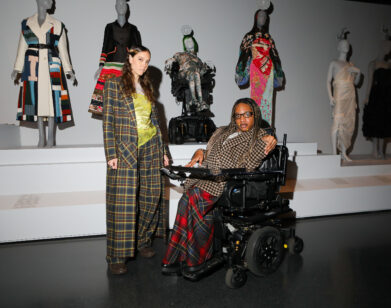ABNORMCORE
DIS Is Back in Berlin With Everything But The World
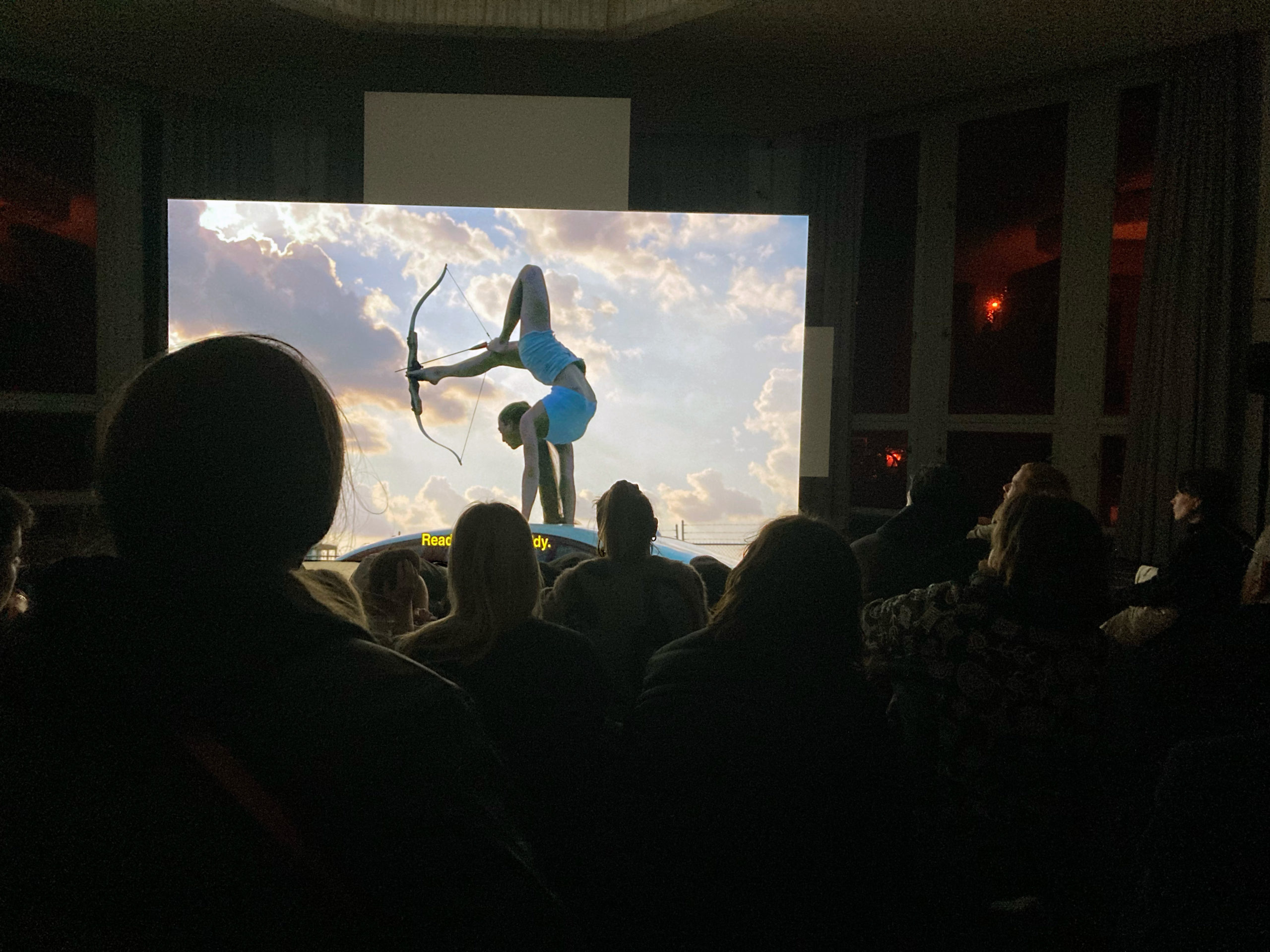
“I saw a really funny TikTok the other day, which was these two boys pulling up to a gallery. It was captioned something like, ‘We got bored with clubbing so now we go to art openings,’” Sam Staples tells me. Staples is part of the curatorial team at Schinkel Pavillon, the art institution run by Nina Pohl responsible for bringing collective DIS back to Berlin for the first time in seven years. In 2016, the project’s central members: Lauren Boyle, Solomon Chase, Marco Rosso, and David Toro—best known for their now-discontinued dismagazine.com, broke the art world with Berlin Biennale 9 (bb9)—a hotly contested art exhibition that shook the establishment with their embrace of hyperlinked digital culture. Recalling bb9’s reception, Boyle notes that, “The show was not directed at everyone. It was for a generation that—in the mid-2010s—was not yet represented by institutions, one that felt suffocated by the academy and frustrated by the parochialism of its critical theory.”
What one might call “Generation bb9” spilled out of both doors and into the streets surrounding the Schinkel Pavillon last Friday night as they celebrated DIS’s Berlin return. Long-affiliated artists such as Christopher Kulendran Thomas, Annika Kuhlmann, and Timur Si-Qin were in attendance, so too were many new faces: cute kids in long skirts and tights, ears lined with silver hoops glistening behind their grown out bleached hair. “Maybe we’ve all upgraded to abnormcore” my New Models co-host Lil Internet suggests. Near the DJ booth, Wolfgang Tillmans held court in a black NTS Radio hoodie as a group of young men in minimally branded black caps gathered near. 032c’s Victoria Camblin buzzed around linking the generations as artist Richard Kennedy, elegant as ever, turned heads in his slim black Prada turtleneck and sumptuous white coat.
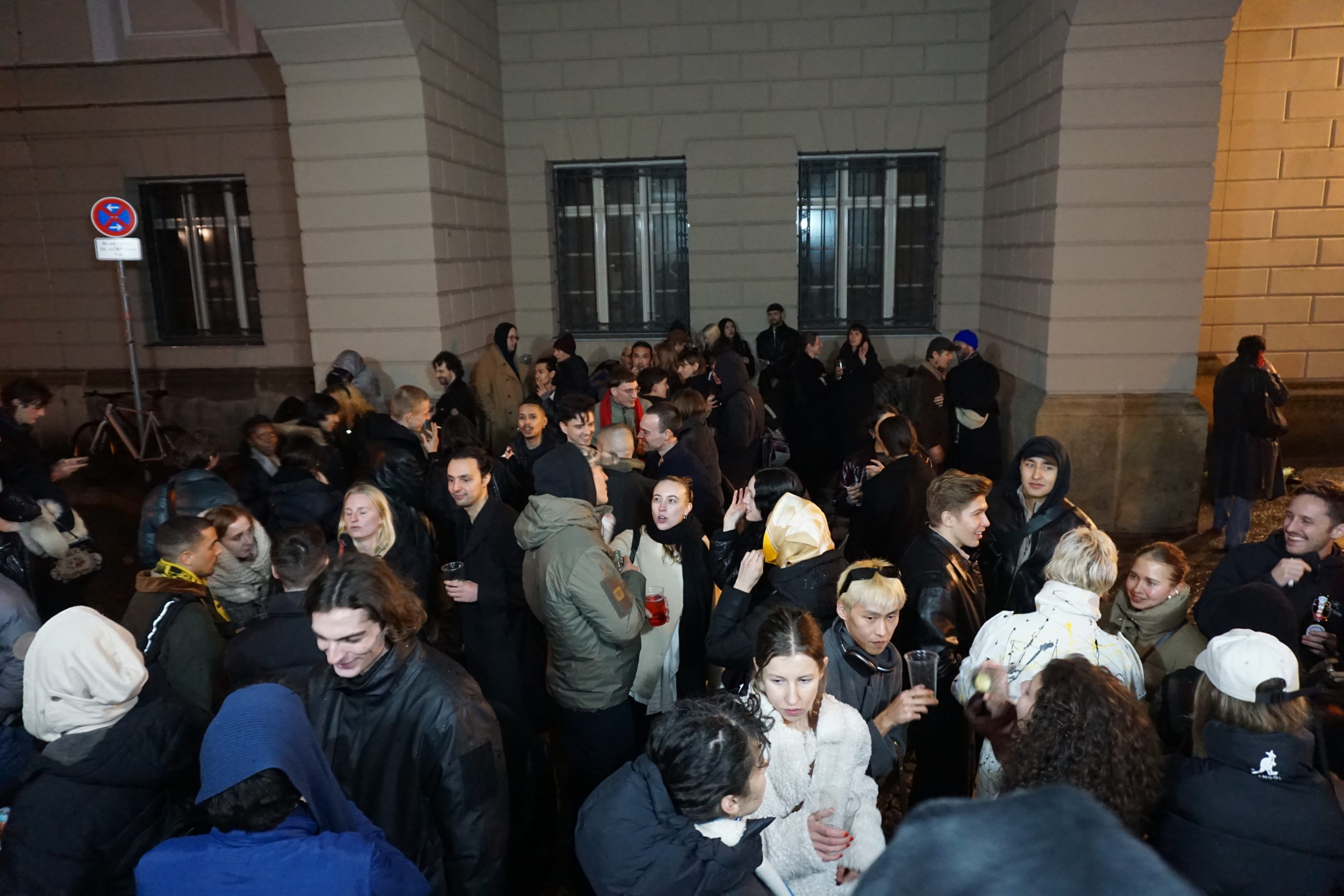
The crowd outside of Schinkel Pavillon.
Back in 2016, DIS was criticized for being too “fashion” and not sufficiently “art,” but in the near-decade since, fashion has arguably become the more interesting space. DIS’s Chase and Toro are at the forefront of that shift with their creative agency Torso, which has art directed countless major fashion editorials and campaigns (including a cover story for this magazine), as well as digital and physical performances (notably Casey Cadwallader’s revolutionary Mugler runway shows).
Naturally, many of Berlin’s brightest fashion minds came out on Friday. While the film played upstairs, the opening was fêted in the dungeon-like, minimally-lit Schinkel Klause below with DJ sets by DIS family Ashland Mines AKA DJ Bobby Beethoven (FKA Total Freedom) and Hood By Air’s Shayne Oliver. Notable attendees included designer Gösta Andreas Lönn Grill and creative director and stylist Betsy Johnson; Niklas Bildstein Zaar of sub, the architectural-creative agency responsible for Balenciaga’s flagship stores and anthropocene-aware runway shows; artist Thyago Sainte, pitbull puppy Diablo in tow; stylist Peri Rosenzwieg and the towering Yves Tumor, who is about to drop a new album in March. In other words, had disaster struck the Schinkel Friday night, a handful of the world’s top forces in fashion would have been lost.
Schinkel director, Lina Louisa Krämer together with co-curator Klara Hülskamp had worked on bb9 and, appreciative of DIS’s continued impact beyond legacy art channels, invited them to present the pilot of their forthcoming docu-sci-fi series, Everything But The World. In the gallery, the work was projected onto a custom-shaped surface capable of accommodating just about every aspect ratio our multi-screened world demands. Surrounding the projection, the octagonal room’s windows were lined with warm-toned lighting gels—turning Berlin’s gray winter sky into, depending who you ask, either a “dreamy Majorca sunset” or a “post-nuclear-disaster vista.”
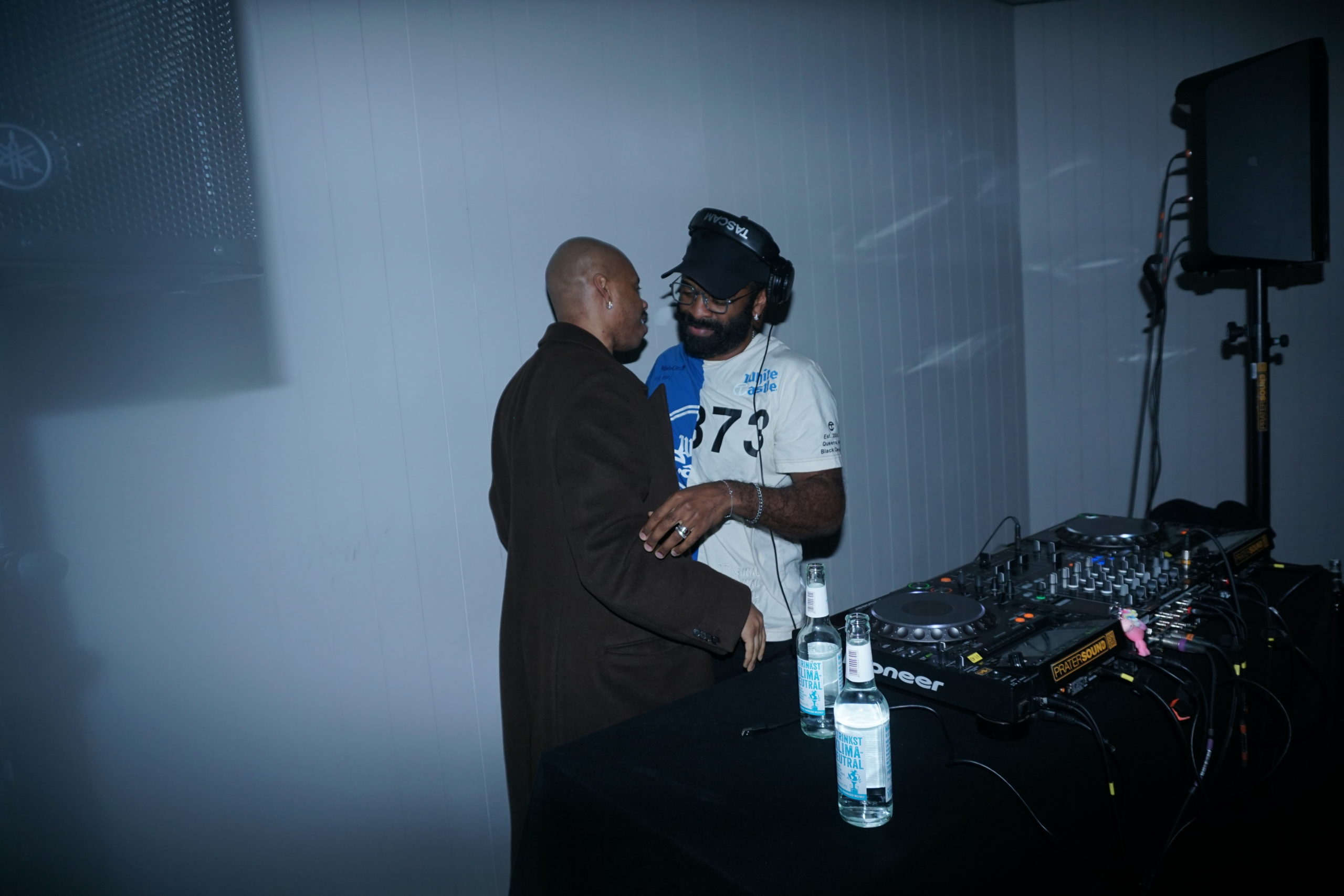
Shayne Oliver and Ashland Mines.
DIS premiered this pilot at Geneva’s 2021 Biennale de l’Image en Mouvement as a highly entertaining meditation on contemporary society’s inability to comprehend scale, scope, and time, including humanity’s rightful place at the table of history. “[Humans] always imagined that they were history’s favorite customer, Daddy’s favorite,” reads Leilah Weinraub in the role of podcaster during the film’s opening sequence. The work’s disparate parts linked together by Weinraub (an LA-based director) are an excellent distillation of DIS’s expansive universe, which includes contributions from artists Lizzie Fitch and Ryan Trecartin, writer and performer Brontez Purnell, theorists Nora Khan and Rob Horning, writer and activist Ava Tomasula y Garcia, creative director Babak Radboy, stylist Avena Gallagher, director Theo Anthony, musician Fatima Al Qadiri, model Omahyra Mota, producer Meg Murane, amd artist Donna Huanca, among many more. Yet hardly any members of this creative community are based in Berlin—so why was it that the collective drew such a crowd?
When DIS started in the late aughts, it was the brainchild of a group of 20-somethings who saw the horizon line of legacy media and 20th century cultural discourse fast approaching and then actually did something about it. “We were like, ‘We have so many friends who aren’t getting seen,’” recalls Boyle. “We wanted to make things that made sense online. At the time, publishing was stuck, the music industry was starting to malfunction, and fashion—fashion sucked. Meanwhile, we were way more interested in what was happening at Burlington Coat Factory.” In turn, DIS created a new paradigm, one ready for the world that’s come into being since.
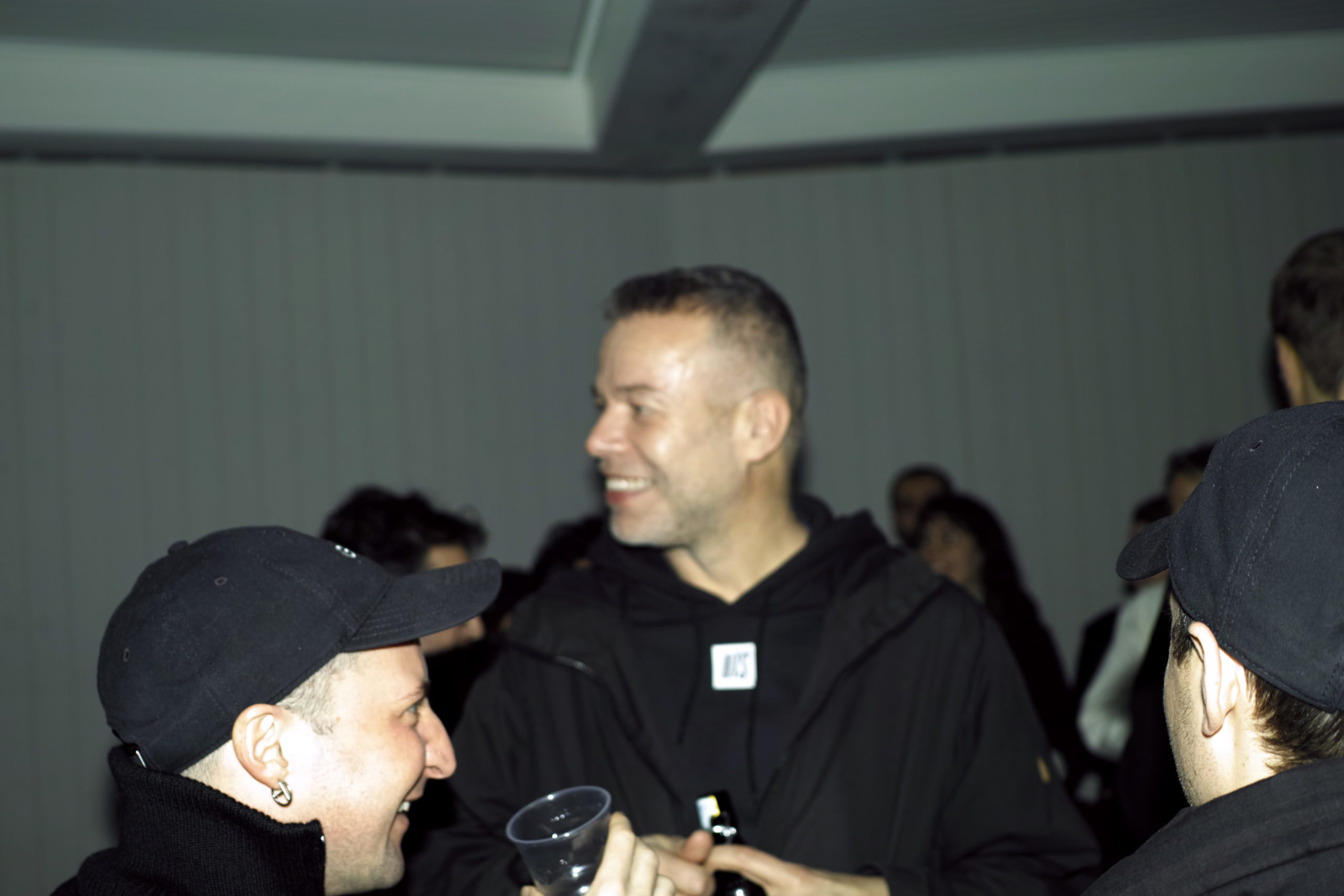
Solomon Chase and Wolfgang Tillmans.
Referencing the TikTok, I asked Staples, who’s in his mid-20s, what would make younger people, at a time when the art world has largely lost its luster, opt for an opening over the club, especially in Berlin. “DIS, Ashland, Shayne, Hood By Air, the GHE20G0TH1K parties, these things always spoke to me because of how accessible and within reach the worlds that they were creating felt,” he shared. “And my personal experience with these people has only been one of warmth. Shayne, like so many in DIS’s sphere, is like a totally maternal person to younger generations.” And how did DIS feel about their return? “Coming back last night for the first time in seven years—it was amazing,” reported Boyle, dressed in a black silky Vaquera shirt accessorized with a small leather Telfar duffle bag. In the dark room, pulsing with dancehall mixed with un-Shazamable hard club, the steam from bodies serving as an ersatz fog machine, I couldn’t make out what she said next, but I will guess something to the effect of finally being in the future, all together with family.

